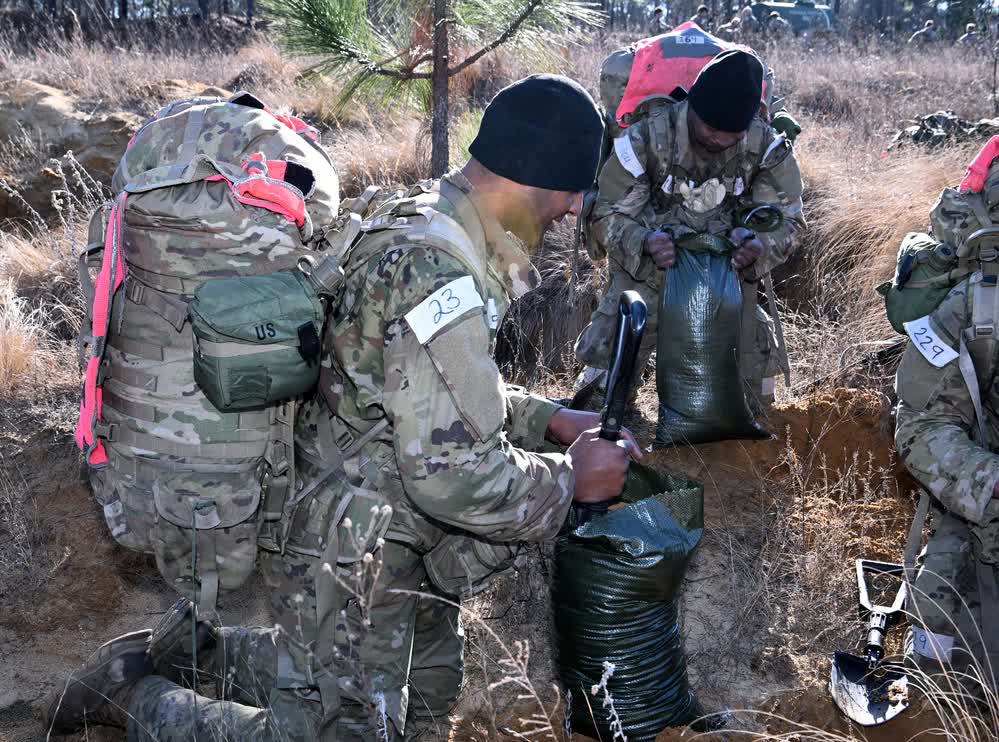The U.S. Army John F. Kennedy Special Warfare Center and School (SWCS) has trained Special Forces soldiers to conduct unconventional warfare for decades. During the War on Terror, fighting a counter-insurgency became the priority during training, while digging tank ditches and other Cold War-era tactics collected dust.
But the war in Ukraine has shown the world that World War II and Cold War-era tactics are not dead. The commanding general of SWCS, Brig. Gen. Guillaume Beaurpere, said they’ve been watching, taking notes, and implementing new training while bringing back the old.
“For example, the engineer sergeant is now being taught how to dig and form counter-mobility tank ditches. Then, after they build them, how to defeat and breach them,” Beaurpere said. “So that kind of thing is absolutely critical, and we realize that in large-scale conflict, that’s a skill that an [Special Forces engineer sergeant] is going to need.”
The frontlines of Ukraine are littered with tank ditches and layers of defensive positions both in front of and behind them – a major deterrent to enemy mechanized infantry piercing the frontline. The threat of large-scale combat is proving that tactics like Battle Drill 7: Enter a trench to secure a foothold, and other WWII-era skills are a necessary part of training for the next war.
Related: The ultimate test of Special Forces’ nerves
“Those are basic warrior tasks. You stop, build a patrol base, and you improve your fighting position. You usually start digging, and eventually, you’ve got individual fighting positions and then trenches,” Beaurpere said. “Then it’s time to move and go do something else. I think that reinforces how critical the fundamentals of just being a soldier have really become now and really honing on those things that make you a good soldier.”
George Barros, the Russia Team & Geospatial Intelligence Team Lead at the Institute for the Study of War, said the implementation of small drones on the battlefield has restricted conventional forces’ ability to maneuver and changed how tank ditches and other anti-armor tactics are implemented.
“The Russians and the Ukrainians have pushed UAS systems down to well beyond the battalion level – down to the company, platoon, and sometimes even lower echelons. There’s no place to hide; everything is seen, and there’s almost no cover,” Barros said. “Drones can strike you with direct fire, they can drop precision munitions on you, and can reconnoiter your position for field guns.”
Barros pointed to the Ukrainian’s last spring offensive that failed due to the intricate use of tank ditches, obstacles, and current-day technology.
“When you add in the other things that complicate maneuvers like tank ditches, landmine fields, and extended anti-tank ground crews – things like that,” Barros said. “What really happens is you have a recipe to actually destroy and remove any conventional forces’ ability to maneuver.”




